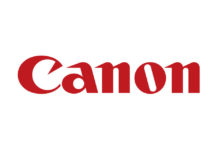
Deb Boelkes has built a career helping companies create cultures that “wow” their people—cultures where leaders motivate and inspire employees, fill them with purpose, challenge them, and help them thrive. That’s all well and good in times of prosperity. But what about in times of fear and uncertainty? As the pandemic keeps employees remotely located, furloughed, and (in the cases of essential employees) working in fear, is it possible to keep a WOW culture going?
“Absolutely,” says Boelkes.
In fact, now is the time for culture-minded leaders to double-down on their efforts.
“Now, more than ever, it’s crucial to maintain team cohesion and keep employees engaged and inspired,” says Boelkes, author of The WOW Factor Workplace: How to Create a Best Place to Work Culture (Business World Rising, December 2019, ISBN: 978-1-734-07610-3, $19.95). “We’re all resetting right now. What you do now to shape your culture is likely to stick around once the crisis has passed.”
No doubt about it: Great leaders drive the creation of great cultures. That’s why now is the perfect time to work on your leadership abilities and commit to lifelong learning.
“The best leaders will be grateful for the chance to take their leadership skills to an entirely new level,” says Boelkes. “They will use this time as a catalyst to test their mettle. They will leave their ego at the door and embrace our conundrum with humility.”
Here are some things leaders can do right now to improve themselves while working to create a culture of WOW in these unprecedented times:
Be more visible and engaged. This makes it less likely that team members will mentally check out or become frustrated and depressed. Garry Ridge, chairman and CEO of the WD-40 Company, shared in Boelkes’ book Heartfelt Leadership, “In hard times, as a leader, you need to be more visible than ever before. We’ve got to be there, in the moment, when people need us.”
Ridge continued, “I’ll tell you a funny story. When we were going through the global financial crisis in 2008, I observed people in the company as I’d wander around this office or any of our other offices around the world. People were asking me more often, ‘How are you?’ I realized they were looking to me, in their time of uncertainty and fear, to give them that little bit of security to carry them through.
“Leaders need to make sure in times of war, and in times of trouble, they are visible.”
Ask techno-savvy team members for help, if needed. If you aren’t used to working with Zoom, Skype, or FaceTime, call on team members who are more comfortable and proficient with using such technology. Not only will it make them feel needed, it can help them become more comfortable in communicating with those above them, especially when they see you behave in an unusually humble way. This, in and of itself, can help build new bridges with more team members.
Make sure everyone understands the mission. No matter what world environment we face, in good times and in bad, the leader’s role is to define and communicate the organizational strategy and the objectives to be achieved. Not understanding why things are being done, or the intent of the mission, is a big demotivator. “Failure to communicate on the leader’s part will surely cause a performance failure for those reporting to them,” says Boelkes.
Remove roadblocks as quickly as possible. To create engaging environments, great managers know how important it is to make sure team members are able to perform at their personal best. This is especially important when people are forced to work from home, doing things in ways they haven’t had to before, with heavier than normal burdens.
“Be readily available, willing to listen to team member concerns, and mentor them,” says Boelkes. “Help each team member feel empowered and confident enough to take initiative for solving problems for themselves to the extent they can. When it’s clear there are roadblocks that must be dealt with at higher levels, do what you can as the leader to get those roadblocks out of their way. Your efforts to help them learn, become more self-sufficient, and be more productive will be appreciated.”
Seek to understand new issues and leverage newfound perspectives. Anticipate quickly changing demand, delivery challenges, and supply chain limitations, as well as opportunities to serve new markets. Encourage team members to share any ideas they may have to improve internal processes, operations, products, services, vendor relations, client services, and/or the customer experience. Working remotely or alone for a change might enable team members to see things from a completely different perspective. Take advantage of the new paradigm to learn and adjust.
Understand what makes employees tick and why they work there. Don’t underestimate the importance of having regular performance reviews and professional development one-on-ones, especially during times like these, even if such meetings must be held online. Just because jobs are no longer as plentiful as they were just a short time ago, never assume your best team members won’t jump ship. Ask them, “What keeps you at our company?”
If you haven’t done it in a while, ask about their career goals. Make sure they know they have your support in working toward achieving their dreams and desires. Determine how, in the current situation, they can best align their unique strengths, evolving professional objectives, and personal needs to best support the organization’s new objectives.
Leverage employees’ changing needs to meet the new needs of your company. During one-on-ones, ask, “What might lure you away from here?” What they tell you today might be totally different from what they might have told you when life was more predictable. There may never be a better time to create a new position or a new set of responsibilities that will allow them to do what they love and help take the organization in a new or different direction.
“Suggest new tasks, or even transfer or promotional opportunities for them to consider, either for the time being or to be enacted when things stabilize,” says Boelkes. “Knowing realignment could be possible in the future might give them the hope they need to stick it out as well as something to look forward to.”
Proactively help employees network and nurture their potential. Offer to facilitate personal/professional development opportunities outside the organization. Make warm introductions for team members with other leaders within or outside your company. Encourage informational telephone interviews so team members can learn more about your company’s internal operations, customer operations, vendor operations, or beyond. Keep team members learning.
“I’ve always been a believer in nudging people out of their comfort zone,” says Boelkes. “That shouldn’t change because we’re in a pandemic.”
Keep internal networks and support systems evolving. Offer team members opportunities to participate in special, newly created webinars to aid in reducing stress, teambuilding, or professional coaching, paid for by the firm, and either hosted by you, a Human Resources specialist, a university extension program, or an executive coach.
Such programs might foster team brainstorming or discussion of topics such as: “how to cope with working from home,” “how to serve customers in new ways,” “ideas to make this new lifestyle easier,” “new ways to serve our communities,” “how to be a better remote manager,” or any other topics team members would like to discuss. Be sure to offer these online events at various times of the day/evening or even on weekends so team members can select a time that works best for them.
Institute Management by Objectives (MBOs). Initiate a performance-based management program for newly remote workers. Allow team members to decide what works best for them for reviewing their performance (i.e., daily, weekly, bi-weekly, or ad hoc). Discuss with each one what it takes to maintain a “Best Place to Work” given the new, albeit temporary, conditions.
Whatever you do, don’t squander this time of culture reset, urges Boelkes. Instead, vow to emerge from the pandemic a better, stronger company.
“It is your leadership that will determine your company’s success over the coming months and on into the future,” she concludes. “If you do your job well, you will all grow as leaders and employees from this experience. And keep in mind one of my favorite quotes from Coach John Wooden: ‘Success comes from knowing that you did your best to become the best that you are capable of becoming.’”
About the Author
Deb Boelkes is the author of The WOW Factor Workplace: How to Create a Best Place to Work Culture and Heartfelt Leadership: How to Capture the Top Spot and Keep on Soaring. She is not just a role model heartfelt leader; she’s the ultimate authority on creating best places to work, with twenty-five-plus years in Fortune 150 high-tech firms, leading superstar business development and professional services teams. As an entrepreneur, she has accelerated advancement for women to senior leadership. Deb has delighted and inspired over 1,000 audiences across North America.
About the Book
The WOW Factor Workplace: How to Create a Best Place to Work Culture (Business World Rising, December 2019, ISBN: 978-1-734-07610-3, $19.95) is available from major online booksellers.
For more information, please visit www.businessworldrising.com.










